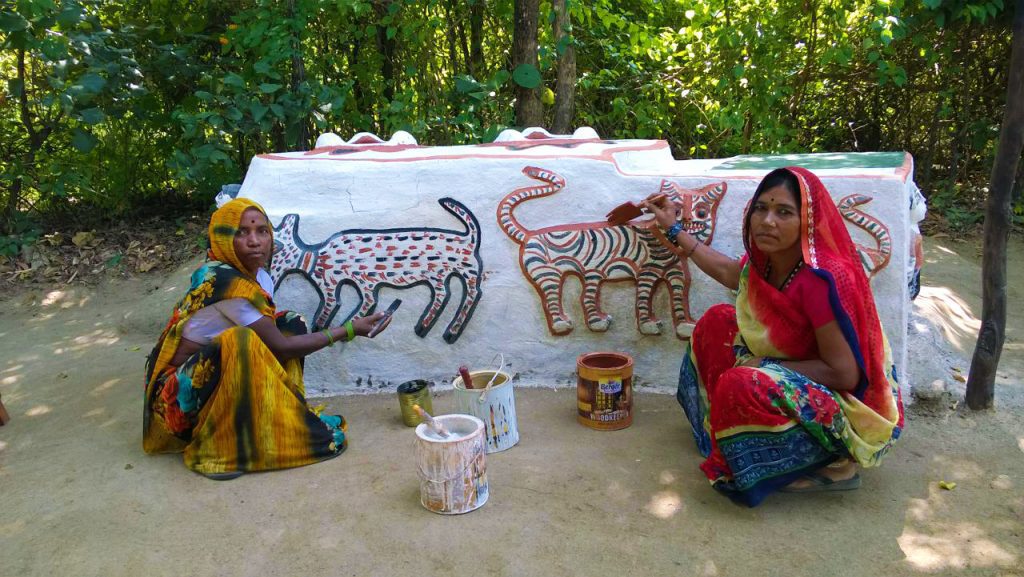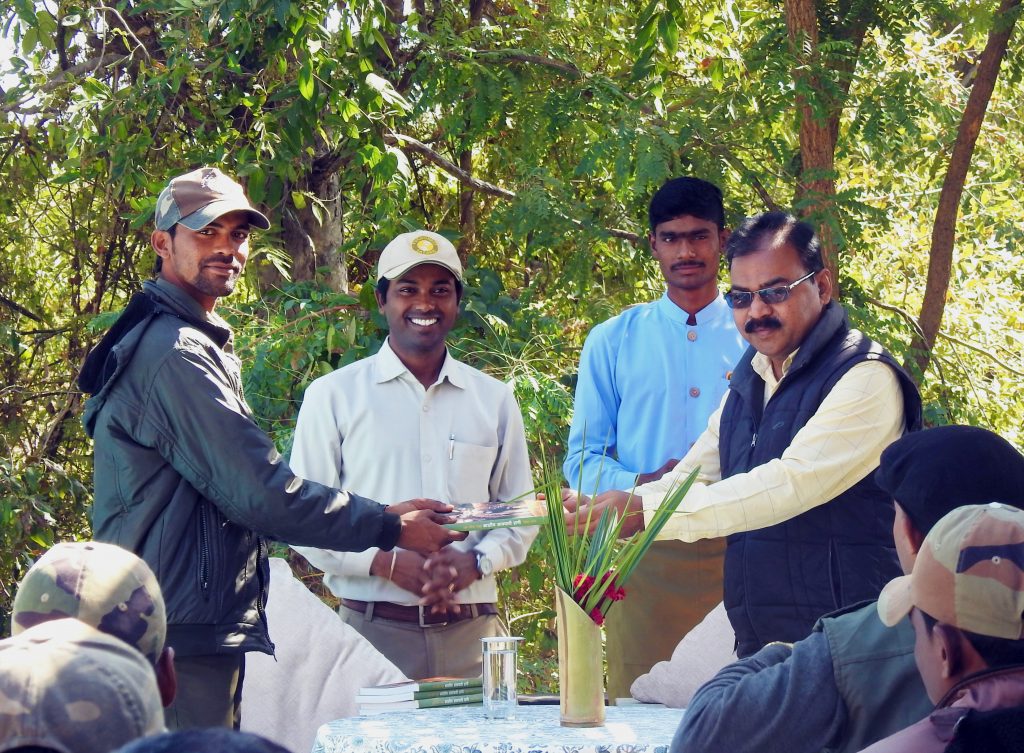Snakes have long fascinated and frightened people around the world, especially in India, where they are deeply woven into the fabric of culture, religion, and folklore. These creatures, sparklingly beautiful yet dangerous if provoked, symbolize life, rebirth, resurrection, regeneration, and even destruction. Their significance in mythology is profound, with Lord Shiva’s connection to Spectacled Cobras being one of the most well-known. In Indian mythology, each of Lord Shiva’s three snakes symbolizes the time frames of the past, present, and future. Despite their important roles, snakes are often misunderstood and surrounded by myths that fuel unnecessary fear and misinformation. In this blog, we’ll explore the top 10 myths about snakes in India, debunking the falsehoods that have persisted for generations and shedding light on the truth about these remarkable creatures. Whether you’re a snake enthusiast or simply curious, this guide will help you see snakes in a new, more informed light.
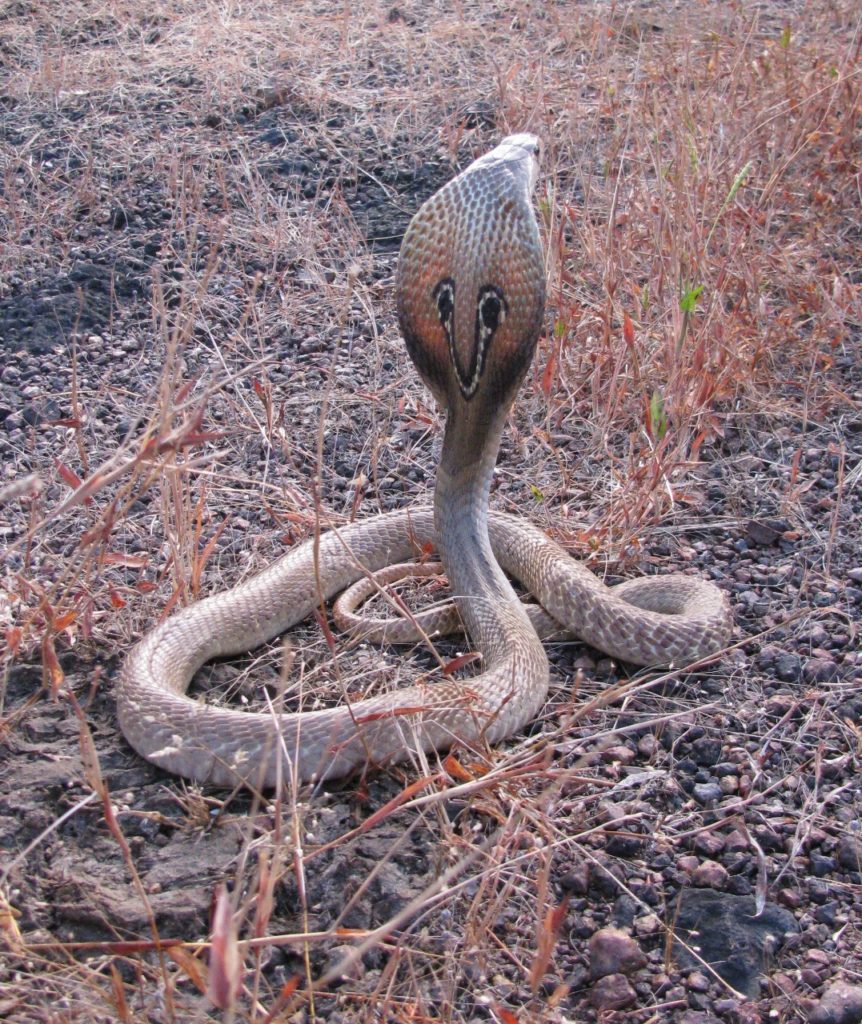
Not just Indian mythology, but also Greek mythology upholds the vital role of snakes.
Did You Know?
The staff with the snake has long been a symbol of medicine and the medical fraternity.

The logo of WHO incorporates this symbol. The symbol is the rod of Asclepius, a staff with a serpent encircling it. Asclepius was an ancient Greek physician also known as the God of healing. The snake symbolises rejuvenation and renewal as it casts off its skin. Also, non-venomous snakes were used in healing rituals in Greek hospitals and temples. So over the years, snakes have came to be associated with medicine.
There is a lot of fascination and curiosity around these elusive reptiles, yet there is fair amount of fear surrounding them too. Well, that works, as that’s exactly what the snakes want us to do, stay away from them. Therefore, there are many disbelief, myths and misunderstandings about snakes.
Here are the Top 10 Myths about Snakes in India.
1. Snakes can avenge their partner’s death
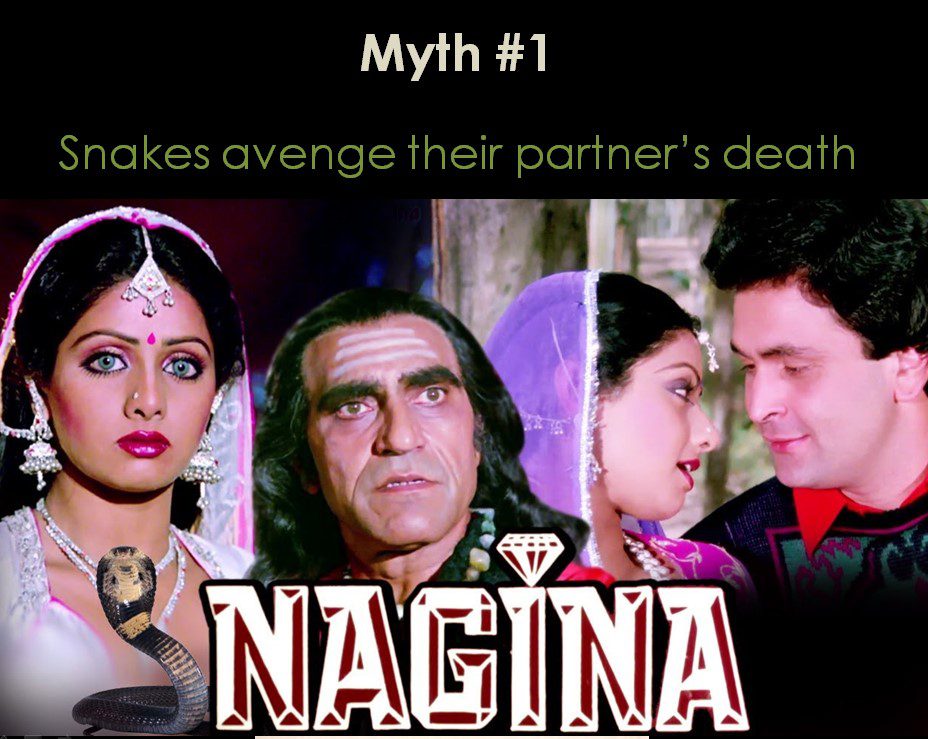
Well, this is interesting and funny at the same time. Thanks to our media, television and Bollywood (Indian cinema), this myth exists.
Obviously this is completely false.
Movies or TV series showcase a story line of shape shifting snakes or ‘icchadhari naagins/saap’. These icchadhari snakes are in love with each other and can sing and dance and turn into handsome looking humans on command. The partner is killed for some reason by a villain and the lover (snake) captures the picture of the killer in her brain. Thereafter, tracks them down and kills the villain in cold blood!!
Many of you may have grown up watching Sridevi, in the movie Nagina, the icchadari nagin who avenges her lover, Rishi Kapoor’s death, in the movie Nagina. This film was such a hit with the masses that it was natural to grow up believing this as the eternal truth!
Unfortunately or rather fortunately, this is far from the truth.
The Fact:
For revenge to generate in someones brain, firstly you need to have a brain developed enough to generate empathy. Snakes lack that kind of brain, so they will never realize the gravity of another snake dying.
Snakes will not hunt you down unless you are their prey. We are not their natural prey. Infact they cannot trace you down or memorize each and every detail of your face either.
2. Snakes drink milk
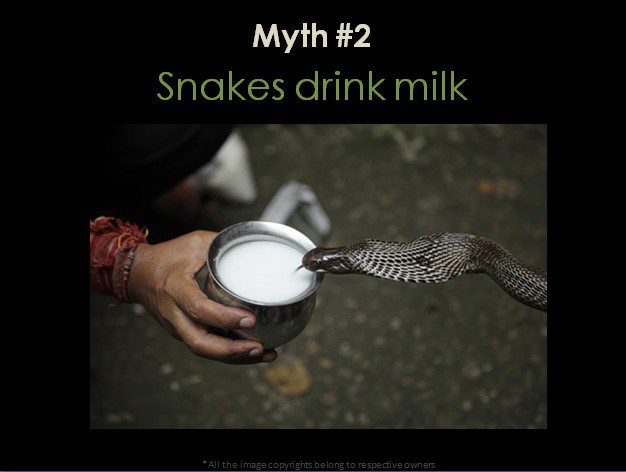
This particular myth is also closely related to Lord Shiva and the Shivling. If you have seen a Shivling, you also must have observed the Cobra canopy on top of it. Usually it is customary in the Hindu culture to pour milk to the Shivling, as a means of worship.
Similarly a lot of people like to link the Shivling to an actual Cobra, thinking it is worshiping Lord Shiva himself. Hence, on every Naagpanchami, Cobras are given milk. Generally in India, it is believed to be righteous deed to give milk to the poor or hungry.
But here is the catch.
The Fact:
What makes us mammals is down the definition itself, creatures that posses mammary glands and give birth to live young. Snakes on the other hand are reptiles that lay eggs.
So the association with milk is completely specific to mammals. Snakes never developed what it takes to digest milk-enzyme, lactase.
The same milk acts as a poison for the snakes body as it can never actually digest it, causing it indigestion, inflation and infection.
Many snakes do not survive after drinking milk.
They are cruelly kept dehydrated by the Snake Charmers for weeks and ultimately will drink whatever fluid is close to them.
Also Read: Know the Interesting Facts About Snakes In India.
3. This is more a misunderstanding than a myth, but are snakes actually poisonous or venomous? Or both?
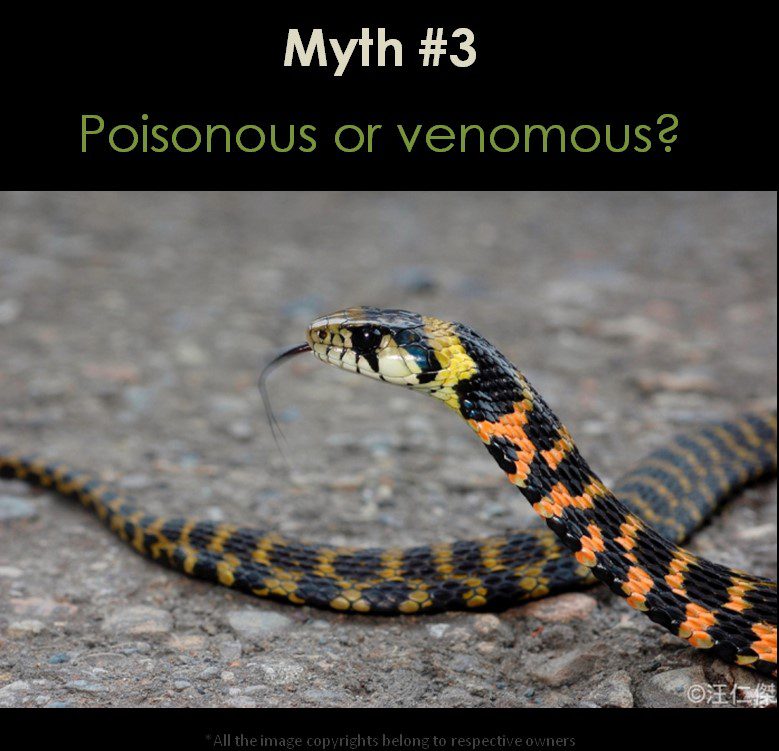
Many people still say that snakes are poisonous. But that again is not correct in most cases.
Most of the world’s snakes that posses toxins are venom toxins and not poison.
The Fact:
Poison is a toxin that needs to be breathed through the skin or lungs or consumed and ingested in your stomach to affect your body.
Venom on the other hand is a toxin that needs to come in contact with the blood to take its toll on your body.
Thus, most species of snakes are venomous.
However, calling a snake poisonous is not completely wrong. It has been recently discovered that many species of Keelback snakes around the world have both poison and venom in their body. These are about 17 natricine species It is a fantastic example of evolution.
4. The many headed snake
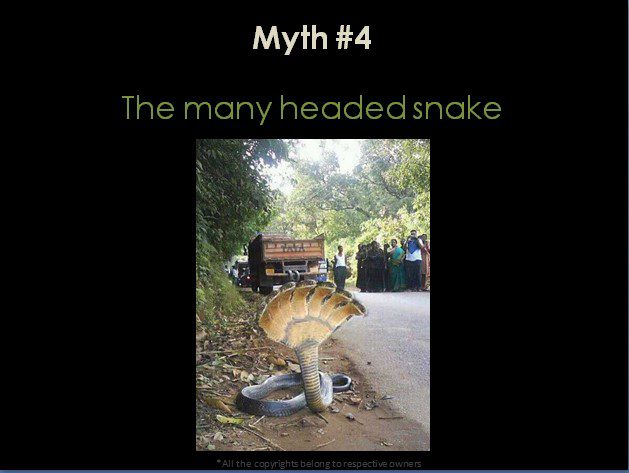
Sheshnaag or Anantha is mythological character and a connect to Gods like Vishnu and Krishna and many others. You might know him by the illustrations, sculptures, photographs and representation of resting Lord Vishnu and the Sheshnaag creating a canopy on top of him.
Sheshnaag had as many as thousand heads. Few images that went viral on many social media platforms reached an exceeding number of people, luring them to believe it as Sheshnaag in flesh and blood.
The Fact:
This is nothing but a cleverly Photoshop-ed image. A digital forgery or manipulation. The original picture is of a good old King Cobra found in Western Ghats and Northern India, made to look like the snake has multiple heads.
These kind of snakes do not exist and could never exist in the wild because morphologically the body cannot support the weight of so many heads at once.
However, there is something called as a two headed snake. No, not a myth but a rare phenomena that can be found in snakes, turtles, tortoises and geckos. This is called bicephaly and is a genetic mutation or a deformity.
Usually these snakes are sold in exotic and strange pet trade for quite a lot of money.
5. Naagmani, the legendary magical stone.
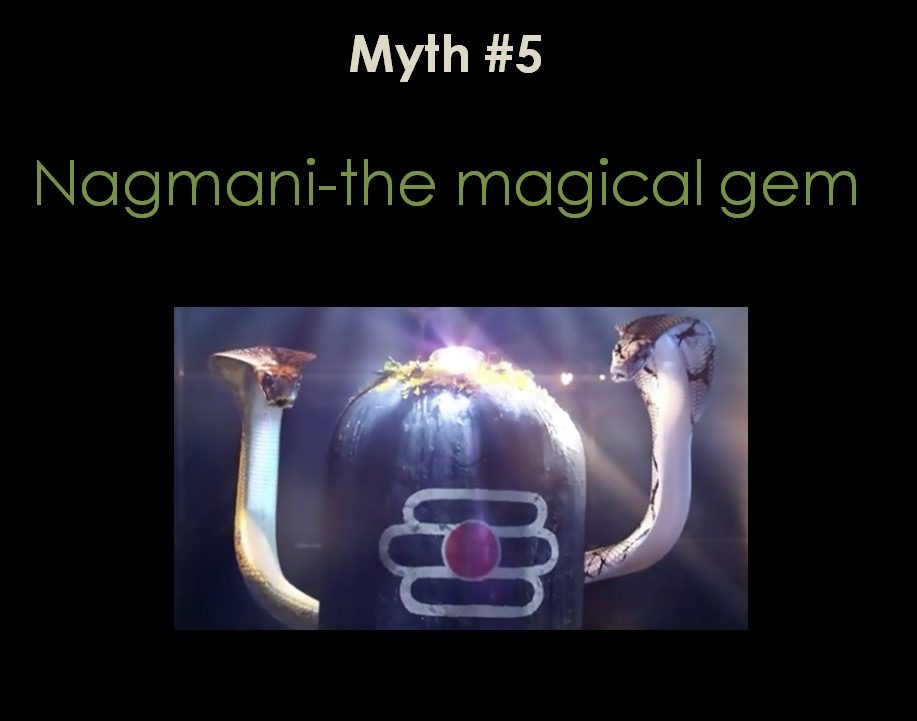
Coming back to movies and TV series again because once again they have done a successful job in pitching a story based on another myth.
Naagmani is supposedly a mystical gem which who so ever shall possess receives unlimited wealth, magical powers and immortality. This particular gem or stone is said to be found in a Cobra’s head.
It is also believed that it possesses healing powers and if its light is shone on the person bitten by a snake, it can heal the person. Of course, none of this has any scientific or logical background to it.
Fact:
Naagmani itself is an ancient myth. There are a few parts of the world where this is called as a snake stone or a viper stone, an animated stone or animal bone, and is used as a folk medicine.
Snakes are nothing but creatures of flesh and blood. So, they have brains in their head and not some stone. Unfortunately, a big number of Cobras are still hunted down and their heads are ruthlessly chopped in search of this gem.
6. Snakes dance to the snake charmers’ tunes.
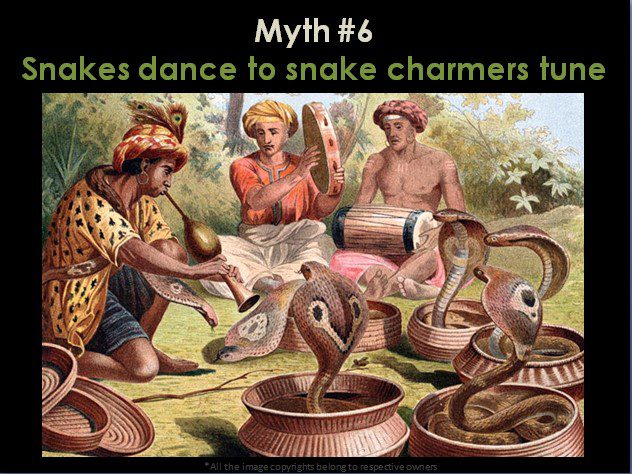
Snake charming used to be a big thing in India until recently. Families used to pass down this profession to their generation and their generation further down and has been in practice for centuries. Thankfully the Government of India has legally banned this profession now. Snake charming surely is fascinating to watch but it was ultimately too cruel for the snake.
Fact:
Snakes are efficient hunters and fierce creatures if threatened. They will often replicate the movement of their prey or whatever is threatening them to be in the attacking range.
Snake charmers play ‘pungi’ or ‘been’ which is a long instrument that intimidates snakes.
Snakes lack true ears and cannot hear high frequency sounds. However they can sense vibrations pretty well. And this is exactly what the snake charmers use to attract the snake’s attention towards them. They create vibrations by rapidly tapping their feet on the ground.
7. Identifying venomous snakes based on the shape of their head.
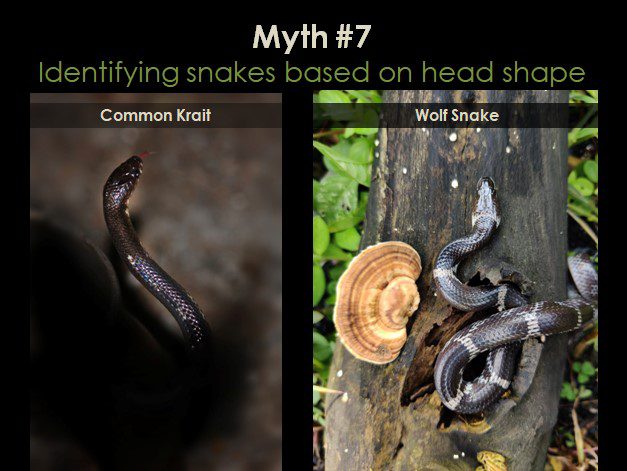
Snakes come in all shapes, sizes and colors world wide. These gorgeous creatures have unique characteristics in themselves. A lot of people believe that you can identify a venomous snake if it has a V-shaped head, and the non-venomous snakes have a round, broad shaped head.
Presumably, due to the typical V-shaped head in Vipers. However, this totally is not true with other venomous snakes.
Facts:
Identifying snakes require a thorough understanding of snakes’ morphology and years of study. Every snake is different in it’s body characteristics. Just call an expert, know how to identify the commonly found venomous snakes around you.
For example, Wolf snake gets its name because of narrow snout like a wolf and is a completely harmless, non venomous snake. On the other hand, the Common Krait is often confused with the Wolf Snake, has a broad shaped round head and is one of the deadliest most venomous snake of India. Cobras, Coral Snakes and Kraits all have broad shaped round heads.
Read More: Snakes in India
8. Flying Snakes & Vine Snakes can pierce through your head or eyes and suck the blood.
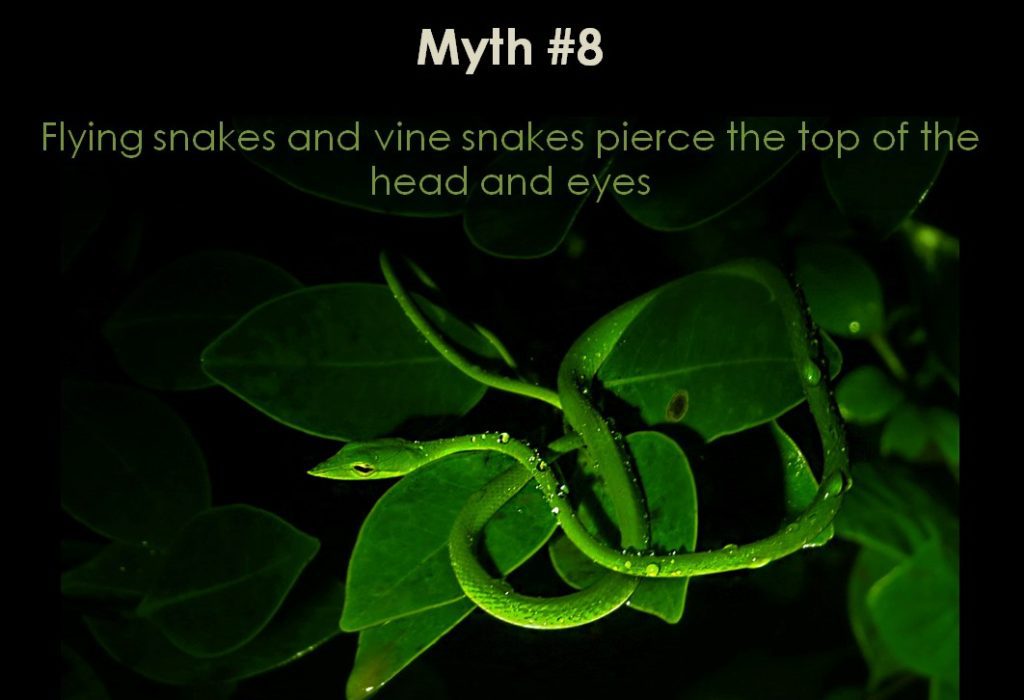
Picture this, a moist evergreen forest full of mist and mystery. Frogs ribbit through the lush green foliage. About 3 to 4 mtrs above the ground in a dense canopy is a Green Vine Snake perched up on a branch. Now that is the typical habitat of these two snakes.
Fact:
If a person is walking under the canopy where these snakes perch, it will bite whatever body part is closer to them, which is the person’s head, face and mouth.
Please keep in mind these are mildly venomous snakes, so not as dangerous to the humans as some of the deadlier ones. The way these creatures look has also added to this myth. A sharp narrow snout makes it look like being pierce worthy.
Vine snake is the only snake with binocular vision and horizontal pupils giving it a strange look.
9. Snakes have sting in their tails | Hoop snakes.
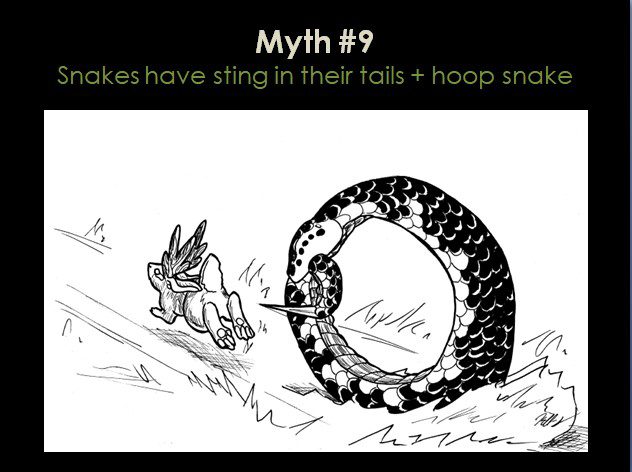
It is believed that some snakes have stings in their tails that can inject venom or poison. Hoop snake is a snake that bites it’s own tail, creating a hoop. Myth has it that if you engage in a bad deed, the snake will chase you in the hoop form by rolling down with sting tail pointed at you!
Facts:
Snakes do not have stings in their tails, but have venom fangs, venom glands and poisonous nuchal gland for attack and defense. Stings can often be confused for modified tail scales found in some snake species. Examples are Shieldtails, Boas and Pythons. This is nothing but an example of defense mechanism.
10. Pythons and Boa Constrictors kill their prey by breaking their bones.
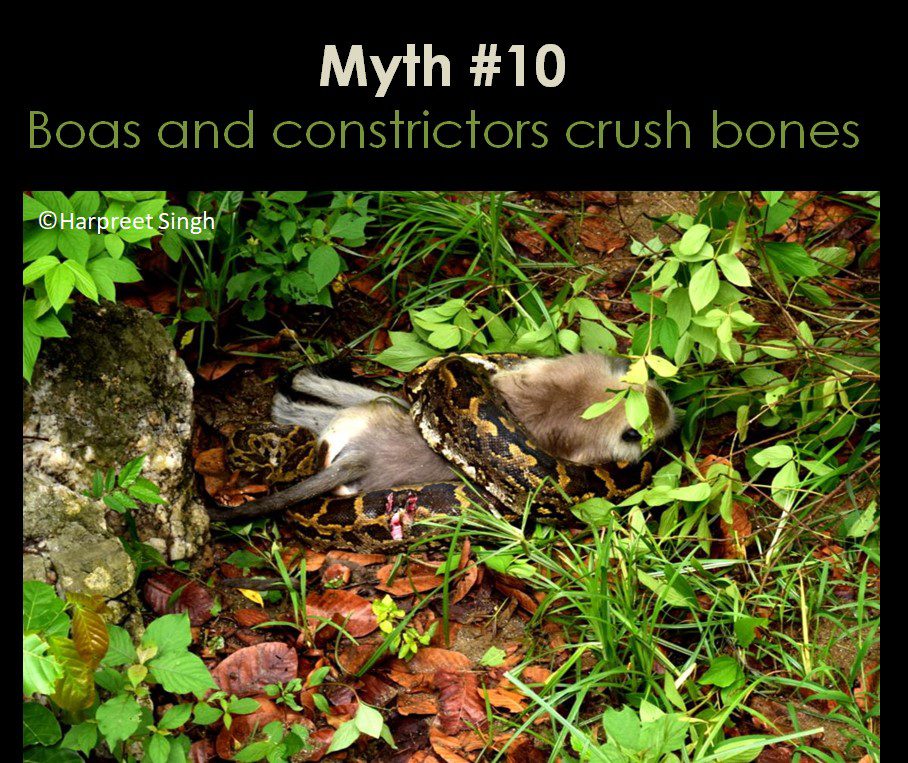
These heavy bodied creatures earn their name because of the way they hunt. It was believed until now that these snakes bite the prey by their head and coil around them crushing their bones. However, recent studies have proved that even though bones do break in the hunting process, that is not the intention of the snake.
Facts:
Breaking the bones will not kill the prey instantly, rather will give the prey a high chance of biting or clawing the snake. Instead, what they actually do is asphyxiation or cutting off the blood supply by coiling around the prey. This causes cardiac arrest and instant death. Thereby reducing the chance of the snake getting hurt.
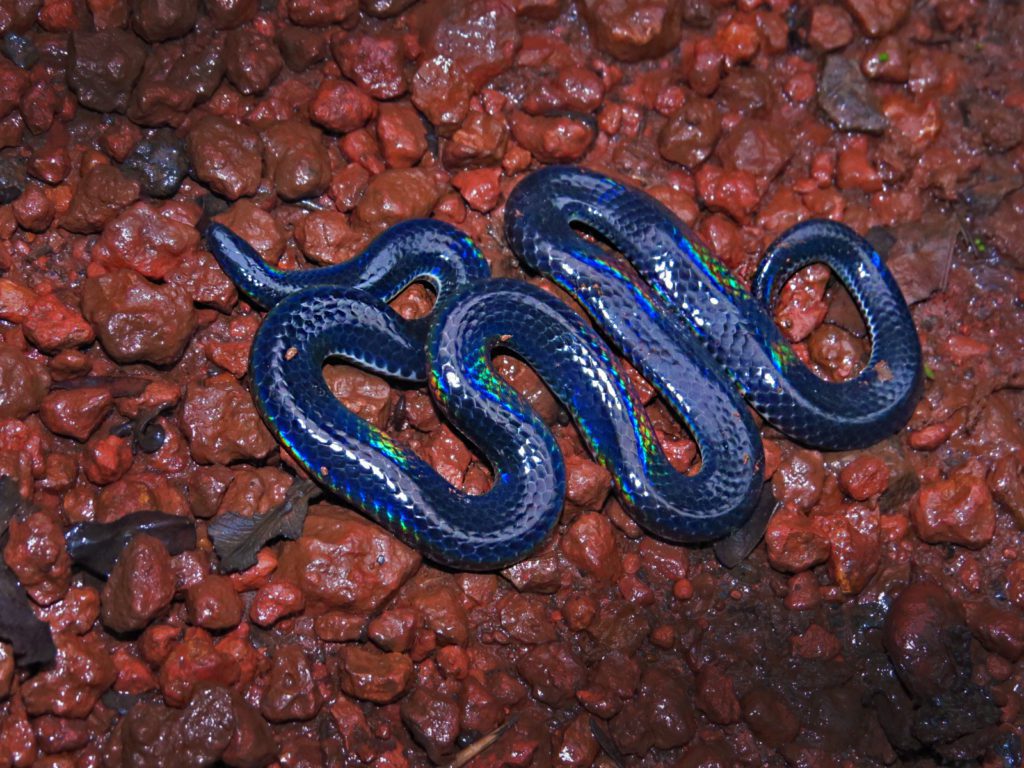
Snakes play a vital role in the ecosystem and are a keystone species.
Losing them from the face of environment will cause a catastrophic damage to the balance and it is our job to live in harmony with these fascinating creatures.
Visit our the Luxurious Lodges in Different location:
The Best Resort in Kanha National Park, Luxury Resort in Tadoba, Resort in Bandhavgarh National Park, Resort in Pench, Resorts in Satpura, and Panna to watch these fascinating species slither in the wild.
Get in touch with our trip curators at Pugdundee Safaris to book your next wildlife holiday.
Our trip curators at Pugdundee Safaris are more than happy to assist you.Phone: +91-011-40132680 Email: [email protected]
Contributed by: Swanand Deshpande, Naturalist, Denwa Backwater Escape, Satpura
Edited by: Natasha Sinha, Content Curator, Pugdundee Safaris


